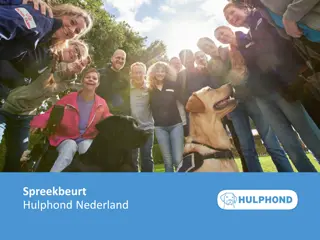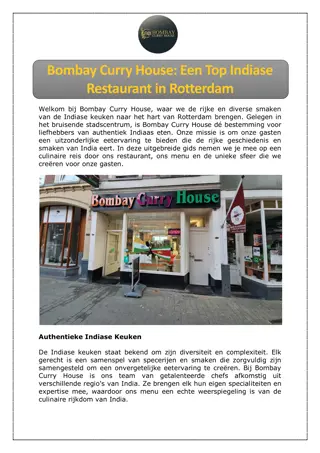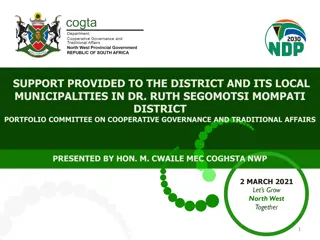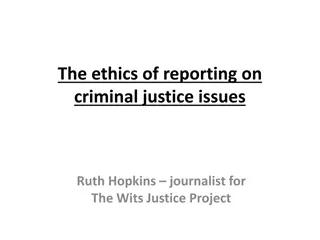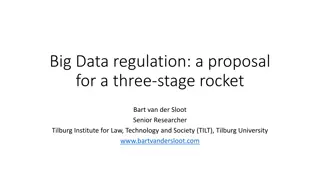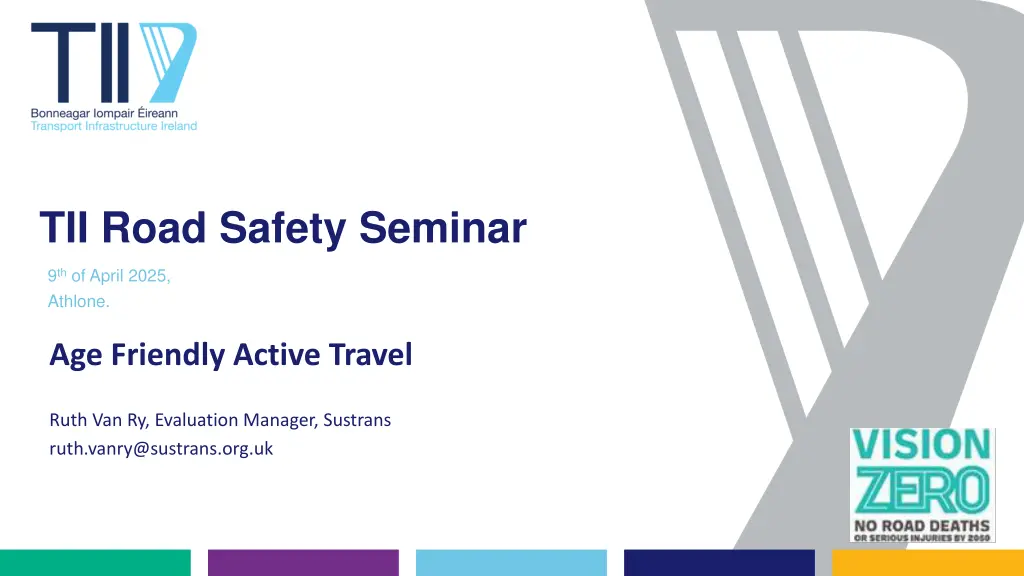
Road Safety Seminar on Age-Friendly Active Travel Evaluation
Join the TII Road Safety Seminar on April 9th, 2025, in Athlone featuring Ruth Van Ry from Sustrans. Explore the importance of age-friendly active travel infrastructure and the significance of the National Cycle Network. Enhance walking, wheeling, and cycling for a healthier and happier community. Learn about key research findings, literature reviews, and project backgrounds shaping the future of transport infrastructure in Ireland.
Download Presentation

Please find below an Image/Link to download the presentation.
The content on the website is provided AS IS for your information and personal use only. It may not be sold, licensed, or shared on other websites without obtaining consent from the author. If you encounter any issues during the download, it is possible that the publisher has removed the file from their server.
You are allowed to download the files provided on this website for personal or commercial use, subject to the condition that they are used lawfully. All files are the property of their respective owners.
The content on the website is provided AS IS for your information and personal use only. It may not be sold, licensed, or shared on other websites without obtaining consent from the author.
E N D
Presentation Transcript
TII Road Safety Seminar 9thof April 2025, Athlone. Age Friendly Active Travel Ruth Van Ry, Evaluation Manager, Sustrans ruth.vanry@sustrans.org.uk
Project background Project background Context Context Sustrans Sustrans We are a UK and Ireland based charity who work for and with communities, helping them come to life by walking, wheeling and cycling to create healthier places and happier lives for everyone. We're the custodian of the UK National Cycle Network a network of over 12,000 miles of signed paths and routes for walking, wheeling, cycling and exploring outdoors. As the population of Ireland has steadily been getting older since the 1980s, ensuring the provision of age friendly active travel infrastructure is an important part of the success of the planned NCN 15% of the general population were aged 65 or over in 2022 compared to a projected 23% of the population in 2042 . The Research and Monitoring Unit (RMU) is a team of research, evaluation and GIS specialists. We make the case for walking and cycling by providing transparent and authoritative evidence, which influences and shapes policy, practice and investment. The development of a national-scale cycle network has taken on greater significance in the context of the Climate Action Plan (2023), which calls for a significant reduction in transport emissions by 2030 with measures aimed at enabling 500,000 extra walking, cycling and public transport journeys per day. 2
Transport Infrastructure Ireland Transport Infrastructure Ireland In 2021 TII, on behalf of the Department of Transport, initiated a project to develop a plan for a new National Cycle Network (NCN). This research was commissioned by TII to inform the future delivery the NCN. The National Cycle Network will see 3,500km of safe bike corridors, connecting 2.8m people in cities and towns. Plan published by DoT in January 2024 (www.gov.ie) The NCN will be composed of 85 corridors, integrating existing and planned greenways and other cycling infrastructure, as well as an extensive new network of safe cycle routes along existing roads. 3
Research Research| |Aims and Phases Aims and Phases Phases - Literature Review An evidence review of the key design and infrastructure guidance and literature available on age friendly active travel nationally and internationally Survey414 people aged 55 and over living in Ireland completed an online survey. 30 of the survey respondents took part in a follow-up interviews ConsultationSurvey of 22 professionals and interviews with 16 Workshop With 11 professionals examining processes, standards, gaps and suggesting improvements Aims - To identify factors, specific to age 55+ that will: Make walking, wheeling and cycling more accessible and enjoyable Improve the safety of people walking, wheeling and cycling 4
Literature Review| Literature Review| Key findings Key findings Separated active travel routes (from motor traffic) increases safety and perceived safety amongst older people. The quality (and maintenance) of surfaces is important for older people Design and infrastructure features which are important are: - frequent seating, - better lighting and - distinct surface materials and colours Active travel links to public transport are especially important for older people in rural areas, who may rely on public transport for longer journeys, but struggle to reach facilities such as bus stops and train stations due to a lack of adequate active travel infrastructure Other important factors include: - reducing speed limits - increasing crossing times on signalised crossings - introducing low traffic neighbourhoods and modal filters to reduce motor vehicle traffic 5
Literature Review| Literature Review|Summary of Gaps Summary of Gaps Design Guidance - Much of the literature initially identified was focussed on the behaviour change and modal shift aspect of age friendly active travel, whereas age friendly active travel design and infrastructure is less visible. Rural context - more rural-specific studies could be carried out. Presently much of the literature is focussed on car-dependency and public transport for older people in rural areas, as opposed to active travel. Mobility scooters - Little research has been conducted into different modes of active travel that are especially relevant to older people, such as mobility scooters within the built environment and infrastructure context. There are currently very few studies focussing on making infrastructure safer for mobility scooter users. 6
Stakeholder Engagement | Stakeholder Engagement | Behaviours Behaviours Active travel behaviours: The online survey was designed and administered in May and June 2023. A link to the survey was sent to Age Friendly Ireland and then distributed amongst the National Network Structure of Older People s Councils and Age Friendly Programme Managers for dissemination throughout their local networks. 414 people aged 55+ replied to the survey. 7
Stakeholder Engagement| Stakeholder Engagement| Attitudes to active travel Attitudes to active travel Those who live in rural locations are more likely than those in urban locations to agree that they don t have the time in their day for active travel, and less likely to agree that active travel is the norm where they live 8
Stakeholder Engagement| Stakeholder Engagement|Safety What would make you feel safer to travel actively Safety % Quotes: There is some really good segregated cycle infrastructure, but it's not yet connected Regular maintenance of pavement and cycle routes to keep them free of weeds, potholes etc. 55 49 Well-lit cycling and walking routes 45 Clear separation of cycle lanes / footpaths from motorised vehicles I've noticed that the crossing time on pedestrian lights is too b***** fast we care more about the cars than the pedestrians which is a shame There is no bus stop near to me so to get to shops I have to use a car Cycle infrastructure stops and then blends with the pedestrian footpaths. It's kind of unclear Fewer obstacles on pavements or cycle lanes, such as shop signs, bins, parked cars etc. 42 42 More safe crossing places More separation between cyclists and pedestrians on cycle routes or footpaths 42 39 Traffic calming measures on roads 36 More routes through areas where traffic is restricted 33 Wider cycle lanes / pavements 30 Longer time allowed to cross at pedestrian and cyclist crossings 9
Rural areas and their challenges Rural areas and their challenges 32% of those living in rural areas would be encouraged to travel actively more often if they were able to combine walking, cycling and wheeling with public transport more easily Just over three in ten people in Ireland (31.4%) live in a rural area. Very remote and rural areas in Ireland have the highest average age, compared to other more urban areas, and the fastest aging population Based on out stakeholder survey, those who live in rural areas are more likely than those in urban areas to be deterred from active travel by places being too far away Our professionals felt that rural areas are inhospitable for active travel and challenging to find opportunities to make improvements to 10
Consultation with the professionals| Consultation with the professionals| Gaps identified Gaps identified There was a good deal of overlap in the areas identified by older people as important for them to feel safe when traveling activity, and principals being delivered by the professionals we consulted. However, there were also some gaps identified: Greenways were spoken of positively but creating a network of routes to connect villages with towns and cities was identified as a gap in current delivery Older people not being specifically designed for, but expected to have been accounted for through a broader inclusive approach Seating and rest areas are seen as important but can be a challenge to deliver Not aware of guidance that specifically considered mobility scooters - most said that there isn t an accessibility specialist that they work with The provision of toilets, which are valued by older people, had only been delivered by a small proportion of professionals engaged in this consultation . 11
Design workshop| Design workshop| Guidance needs identified Guidance needs identified Priority guidance improvements identified in the workshop: Tactile paving guidance particularly for complex areas Policy around responsiveness of pedestrian crossings Seating designs, location and quality guidance Standard designs for continuous footways and crossings Review of standards through an Age Friendly Ireland perspective Specific guidance for rural roads/lanes Public lighting guidance it was discussed that in particular the balance between ecology and making routes accessible is hard to navigate When engaging with stakeholders a lack of availability of local groups can be a barrier, as well as a lack of formalisation around this process. 12
Recommendations: Recommendations: 42% of survey respondents said unsafe roads deter them from travelling actively Separation of active travel modes from traffic is clearly a preference Poor surface quality on existing active travel routes is also a deterrent Recommendations Encourage the continued delivery of high-standard separated active travel routes, lighting and high quality, even surfaces Review where the remit for route maintenance lies and ensure that route maintenance is conducted to prevent a safety risk from trips or falls 13
Accessible infrastructure Accessible infrastructure Our review of literature highlights that the relationship between mobility scooter usage and the built environment is an under researched topic Our consultation with professionals found that none are aware of design guidance that specifically considered mobility scooter users as a distinct group Active travel design practitioners also felt that there was a lack of data around the general levels of mobility scooter usage and how this user group uses the existing infrastructure Recommendations Better understanding required of the mobility needs of the older age group Barriers on routes need to be identified and removed Greater awareness/creation of design guidance for mobility scooter and wheelchair users. 14
Providing toilets and rest places Providing toilets and rest places 53% of our survey respondents said they would be encouraged to travel actively more often if there were more toilets 41% of our survey respondents said more seating at regular intervals was important. Although most of our active travel design practitioners had considered benches in their planning very few had designed features for public toilets The active travel design practitioners consulted did not have clear guidance or policies on how to deliver toilets Recommendations Provision of toilets needs to be included in design guidance Better collaboration between those designing routes and those delivering public toilets is required The inclusion of seating and shelters should not be overlooked or sidelined 15
Data collection, identification of needs and evidence of impact ata collection, identification of needs and evidence of impact Our consultation with active travel design practitioners found very few examples of tools or processes that are specifically focused on the needs or experience of older people None of our practitioners were aware of auditing tools that specifically focused on the needs of older people There were very few mentions of key performance indicators that relate to age-friendliness Recommendations Guidance is needed on how to identify where provision for older people is a priority Highlight/create specific relevant auditing tools in guidance which considers the older route user Produce guidance on route monitoring and evaluation in relation to older people Establish standardised KPIs at local and national levels which focus on the older route user 16
Support those delivering active travel infrastructure Clear consistent guidance at a national level, and sign posting and training sessions for that guidance, would aid the planning and design of age friendly active travel: Provide specific funding, and guidance, to support consultation with older people Build a broad repository of case studies that is accessible to practitioners and additionally rural context cases studies Review of tactile paving guidance (varied and unclear currently) Greater cross departmental collaboration and consultation with age friendly groups would improve the planning and delivery of routes that support active travel by older people. Review guidance around multi-disciplinary team working, to ensure there is sufficient information about the different types of roles that would ideally be consulted in the development of a scheme. 17
Thank you for your attention! Full reports are due later in 2025 - Age Friendly Active Travel - Empowering Women to Cycle info@tii.ie https://www.tii.ie/en/tii-library/research/ monitoring@sustrans.org.uk https://www.sustrans.org.uk/for-professionals/research-monitoring-and-evaluation/



